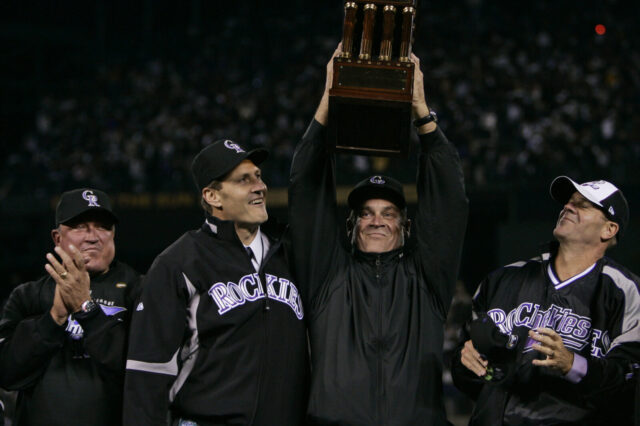Opponents are beginning to see what Garrett Hampson brings to the diamond.
While he’s known for speed, the infielder is setting a new bar for his future production amid an unforeseen, late-season breakthrough. It’s also showing that he’s found his way.
In the last week, Hampson has hit five home runs – including two in Tuesday’s late-night win over the Giants, his first two-homer game in the majors.
For the first homer of the night, Hampson took Madison Bumgarner deep, courtesy of his “sneaky pop”:
HAVE MERCY! pic.twitter.com/XfOf37QFCE
— Colorado Rockies (@Rockies) September 25, 2019
The outburst has brought his season total to eight after entering the year without a single long ball. Since Sept. 12, he’s hitting .432 – likely the best stretch in his entire career with the Rockies. More importantly, he’s walked five times with only five punchouts.
Before the breakout, Hampson’s strikeout-to-walk ratio was unsightly with 75 strikeouts and only 19 walks.
As the season nears a close, this has been the stretch the infielder has yearned for.
In each of the season’s first five months – outside of May’s 18 at-bats – Hampson failed to hit .250-or-better in any of them. His lack of success even forced a demotion to make room for top-prospect Brendan Rodgers.
The constant sentiment from those inside the team was that Hampson’s production wasn’t indicative of his talent. Several pundits outside the clubhouse agreed.
So what’s changed?
When looking at the exit velocities, launch angles and hard-hit percentages of the last month for Hampson – nothing has. All three have either stayed the same or dipped some in the streak.
The aforementioned strikeout-to-walk improvement isn’t a fluke. It’s also a looming reason why Hampson has found his form.
In September, Hampson’s whiff percentage on fastballs has dropped from 21.3 percent to 10.5 percent according to Statcast. Similarly, his swing-and-miss percentage against breaking balls has dropped from 50 percent to 25 percent while his offspeed percentage has stuck at an even 25 percent.
Hampson’s choosing to swing at fewer bad pitches, while also making contact with far more pitches in the zone.
Streaks like Hampson’s are common in a Rockies’ uniform. They’re usually orchestrated solely at Coors Field though. In four road games – both in pitcher’s parks – he’s gone 7-for-17 with four home runs. Going against Clayton Kershaw, Bumgarner, Walker Buehler and Hyun-Jin Ryu in the process make the results even better.
The end of the year for a downtrodden team is about seeing new talent emerge. Hampson, Sam Hilliard, Josh Fuentes and others are all showing they could contribute in the future.
Beyond this year, unlike many of his counterparts, Hampson has several possibilities for playing time.
The infield is just part of Hampson’s eligibility. On top of playing second base and shortstop, he can also man the outfield.
Next year, Charlie Blackmon and David Dahl are guaranteed a spot in two of the team’s three outfield slots. Only an injury could alter the course. They’ll likely fill in the corners, leaving a gap in centerfield.
The one problem on Hampson’s resume is fielding. He, much like Ian Desmond, is a below-league-average outfielder according to runs saved per game.
Hampson’s speed will be key. The sprint speed he’s showcased is top-10 across the majors. Translating that quickness to the outfield terrain of Coors Field won’t be easy, but it will be necessary.
Offseason work in the field will be vital for Hampson’s improvement – especially if he wishes to capture an everyday spot in the lineup.
If the last two weeks have shown anything, it’s that the bat is further along than many may have thought.



